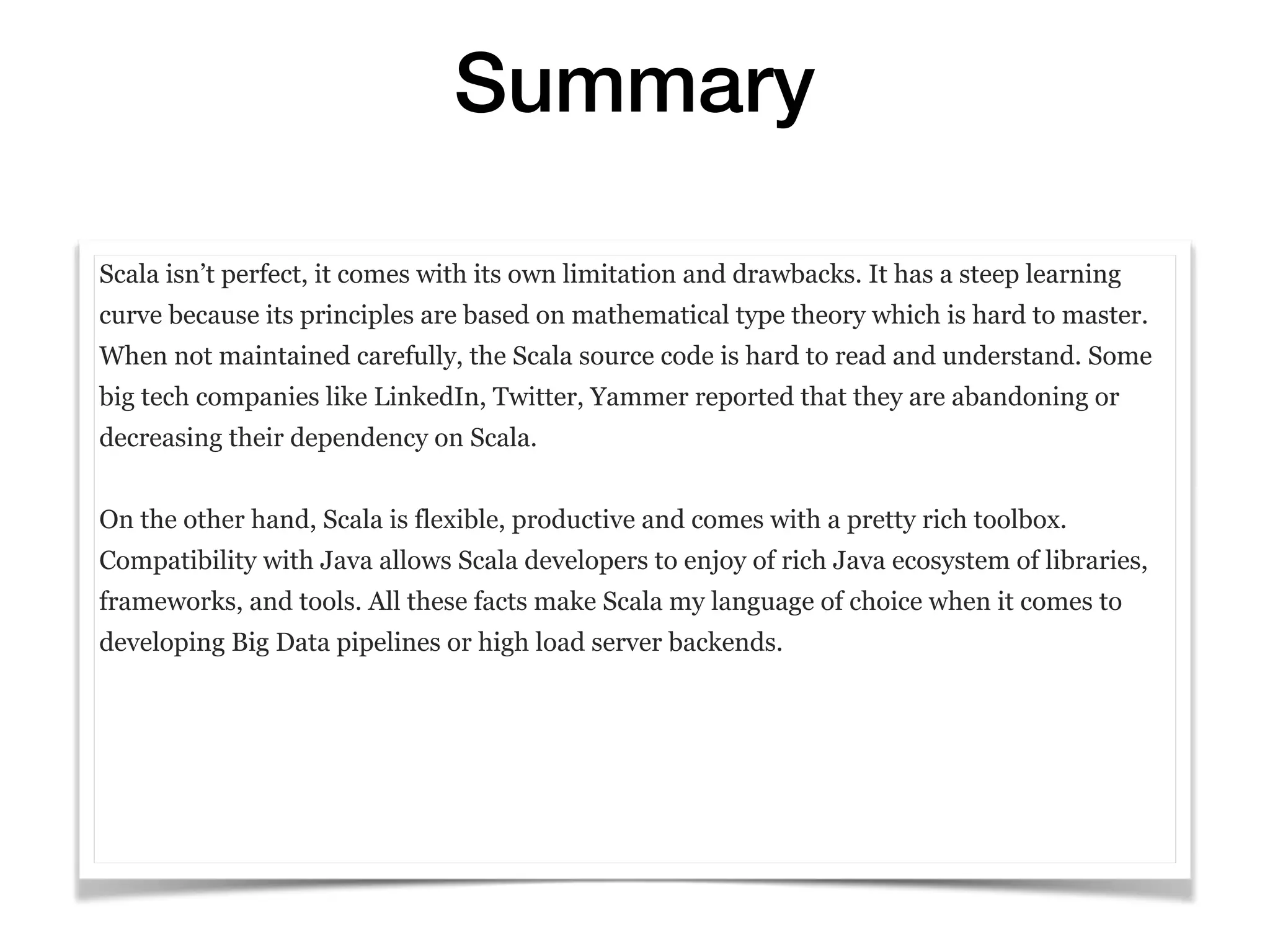This document provides an overview of a 30-minute Scala tutorial covering Scala's core features like case classes, pattern matching, implicit classes, higher-order functions, and the Option monad. Scala is designed for concise syntax compared to Java, supports both object-oriented and functional programming, and is statically typed on the JVM. The tutorial demonstrates Scala concepts like implicit classes extending functionality, pattern matching for control flow, and using the Option monad to avoid null checks when chaining method calls.
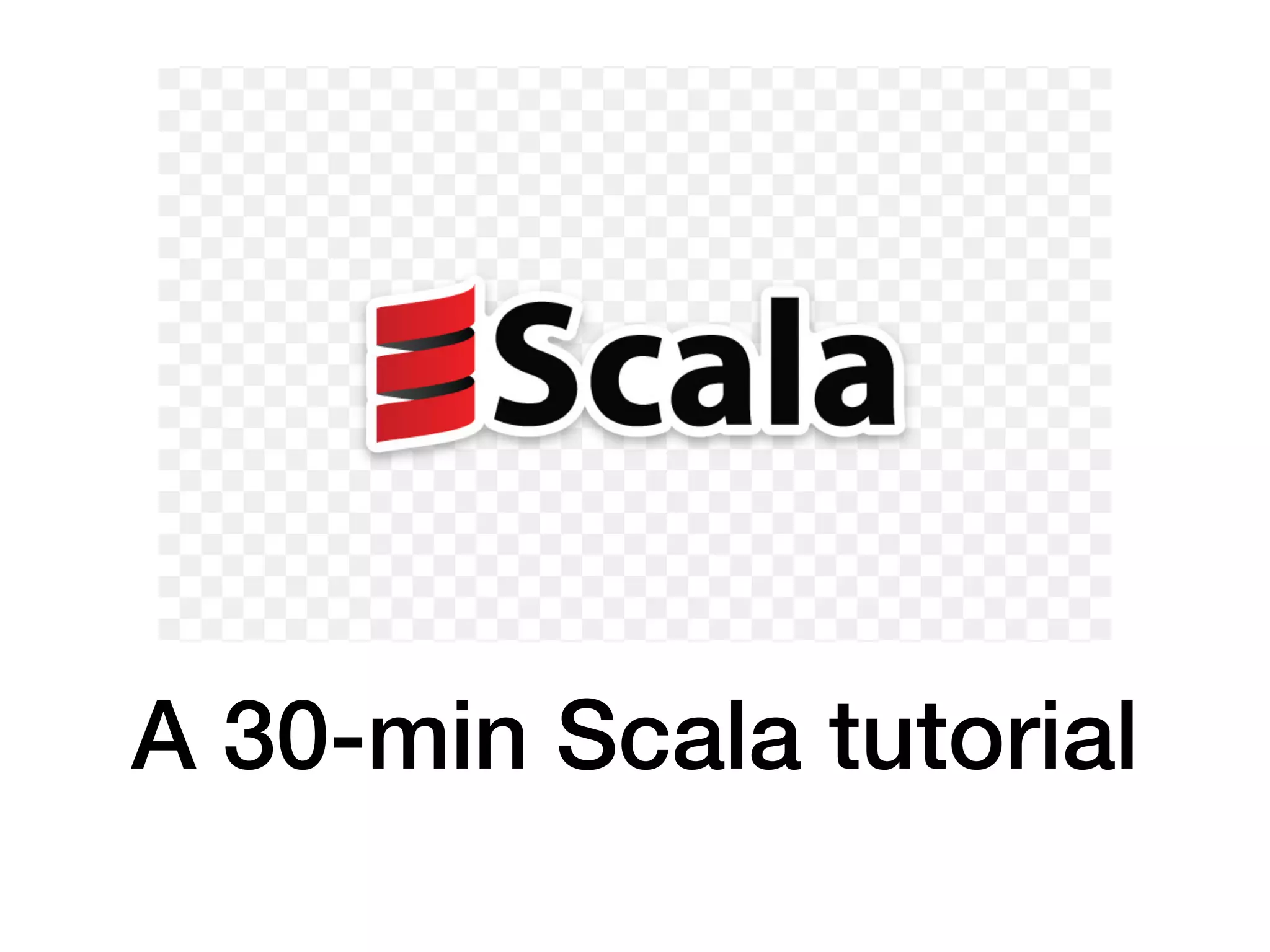
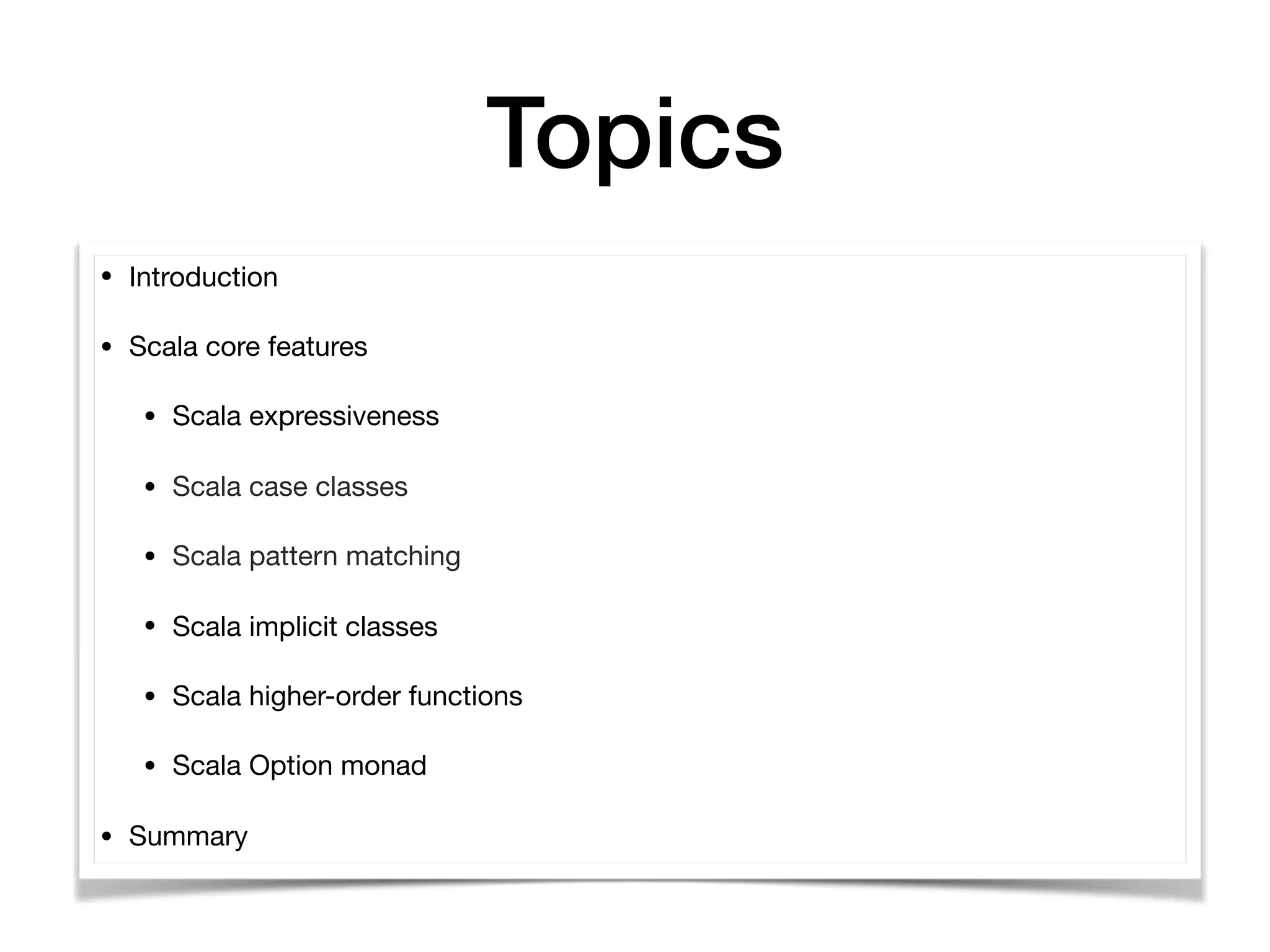
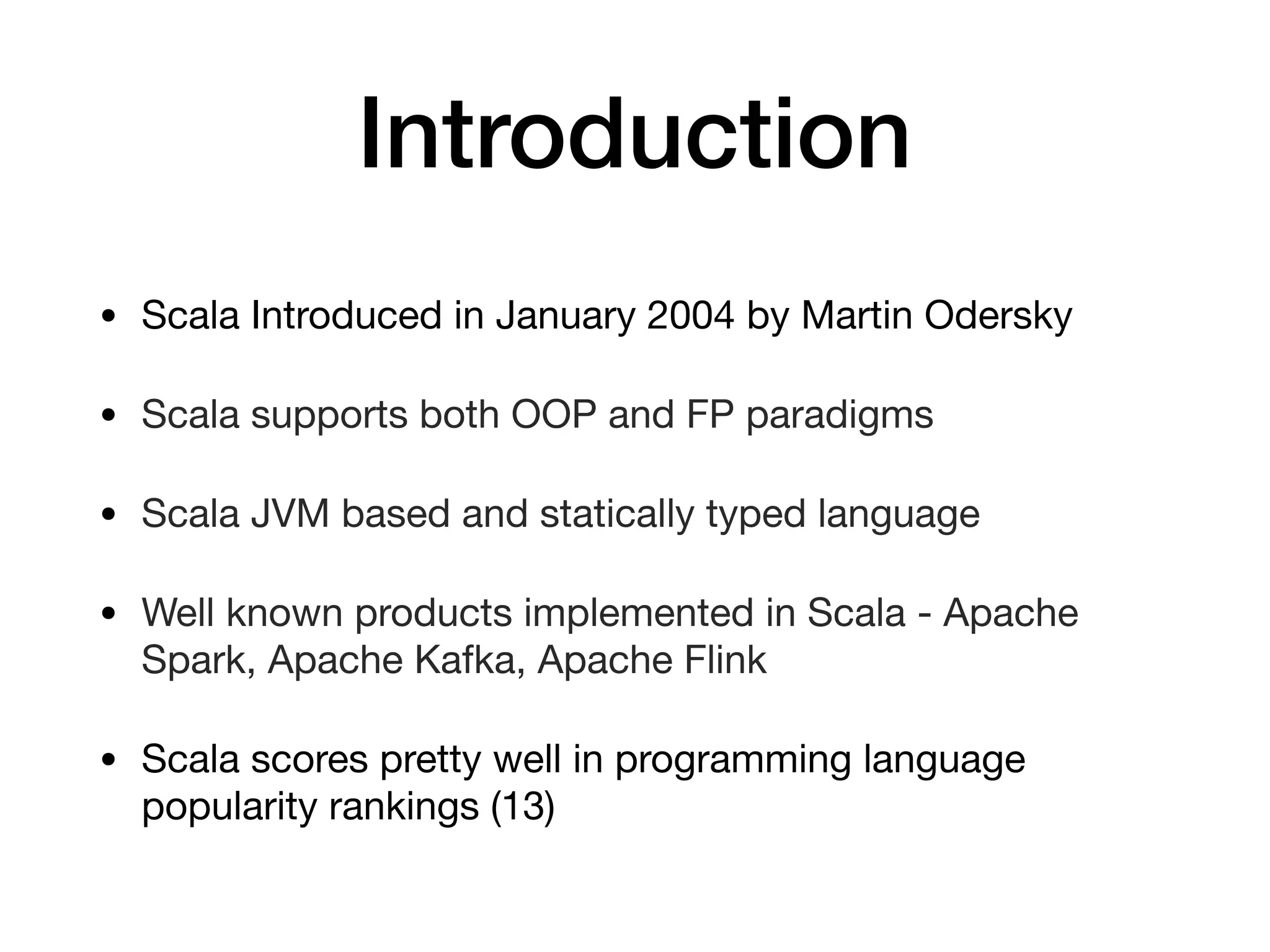
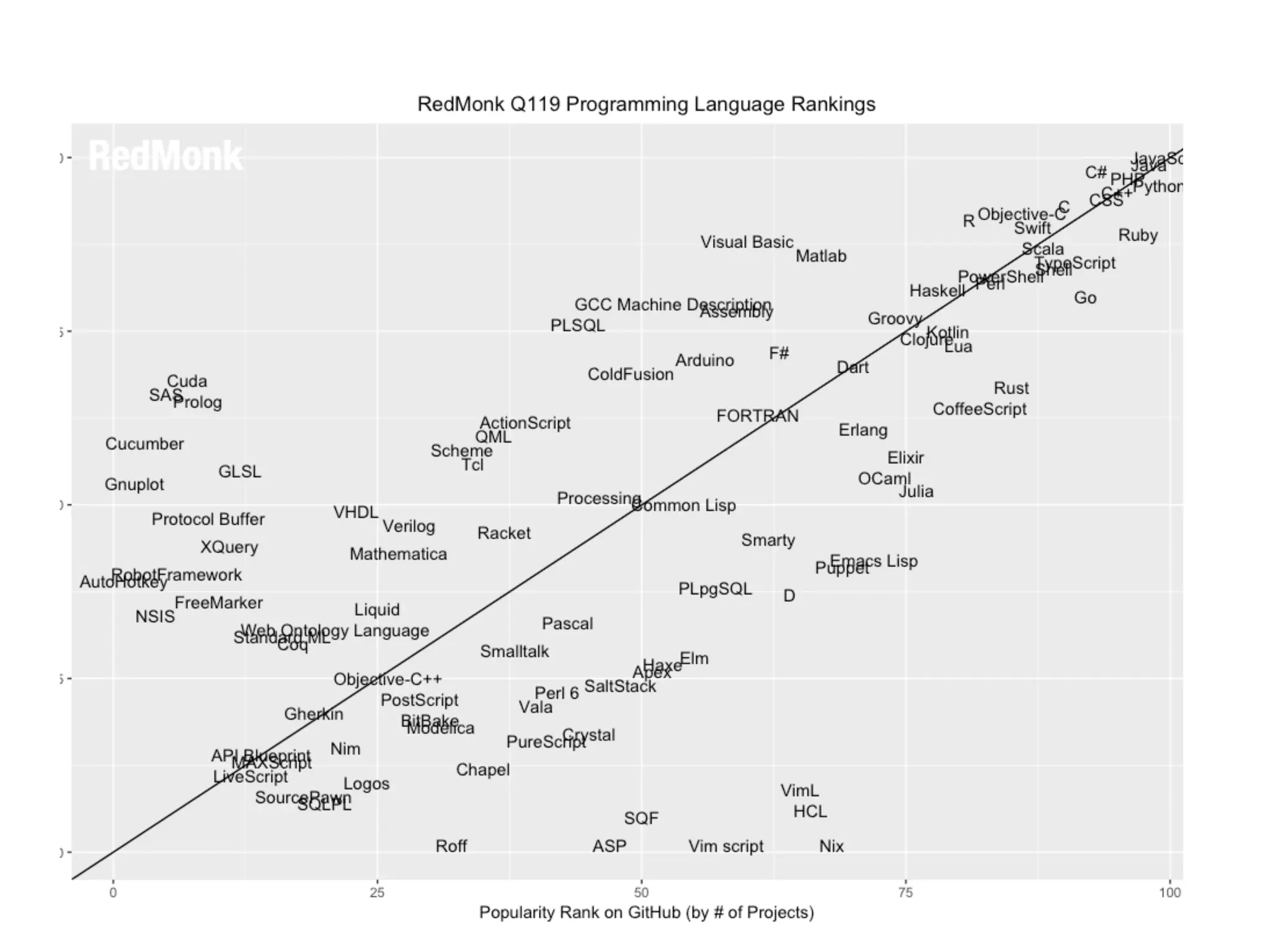
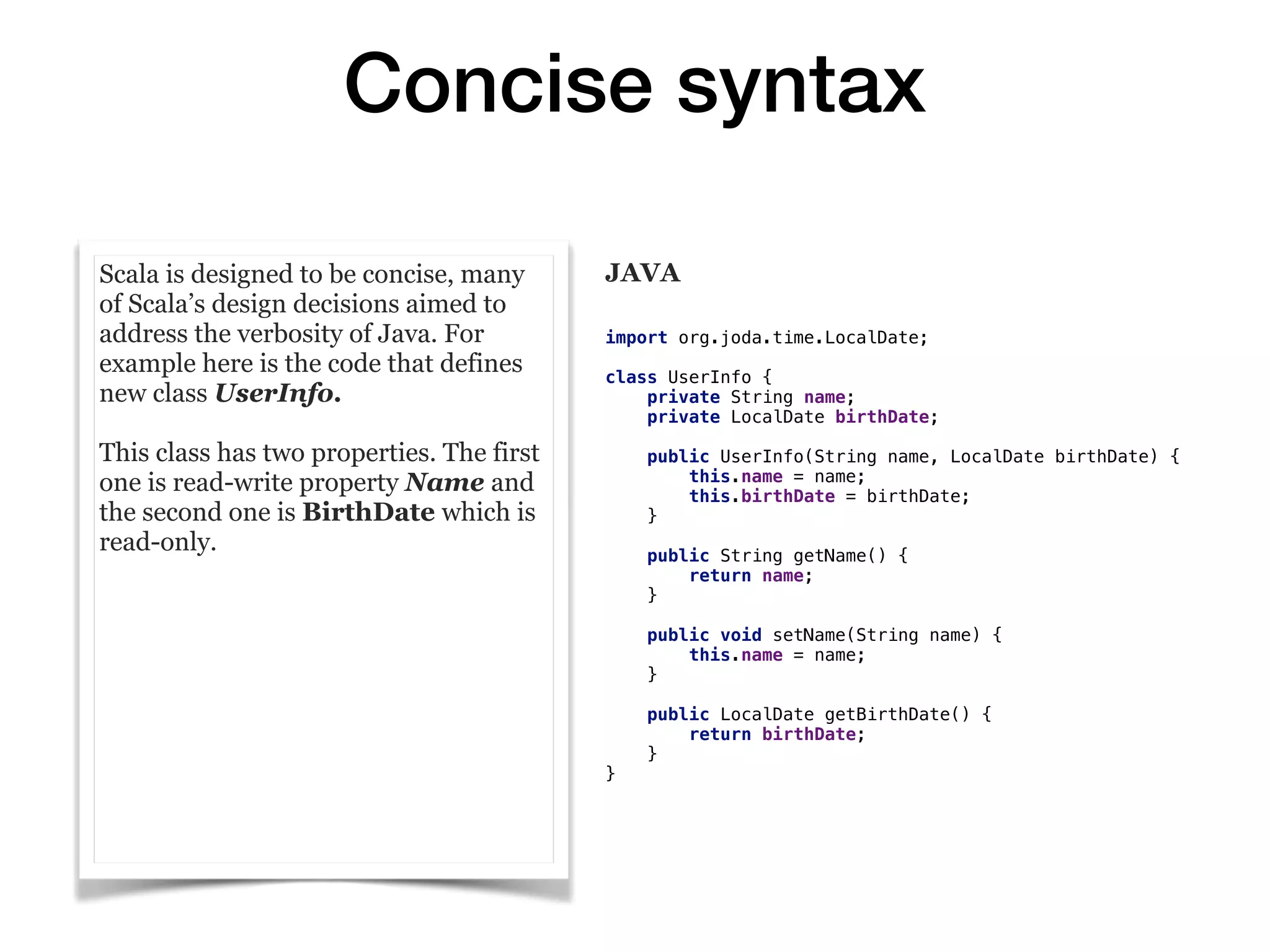
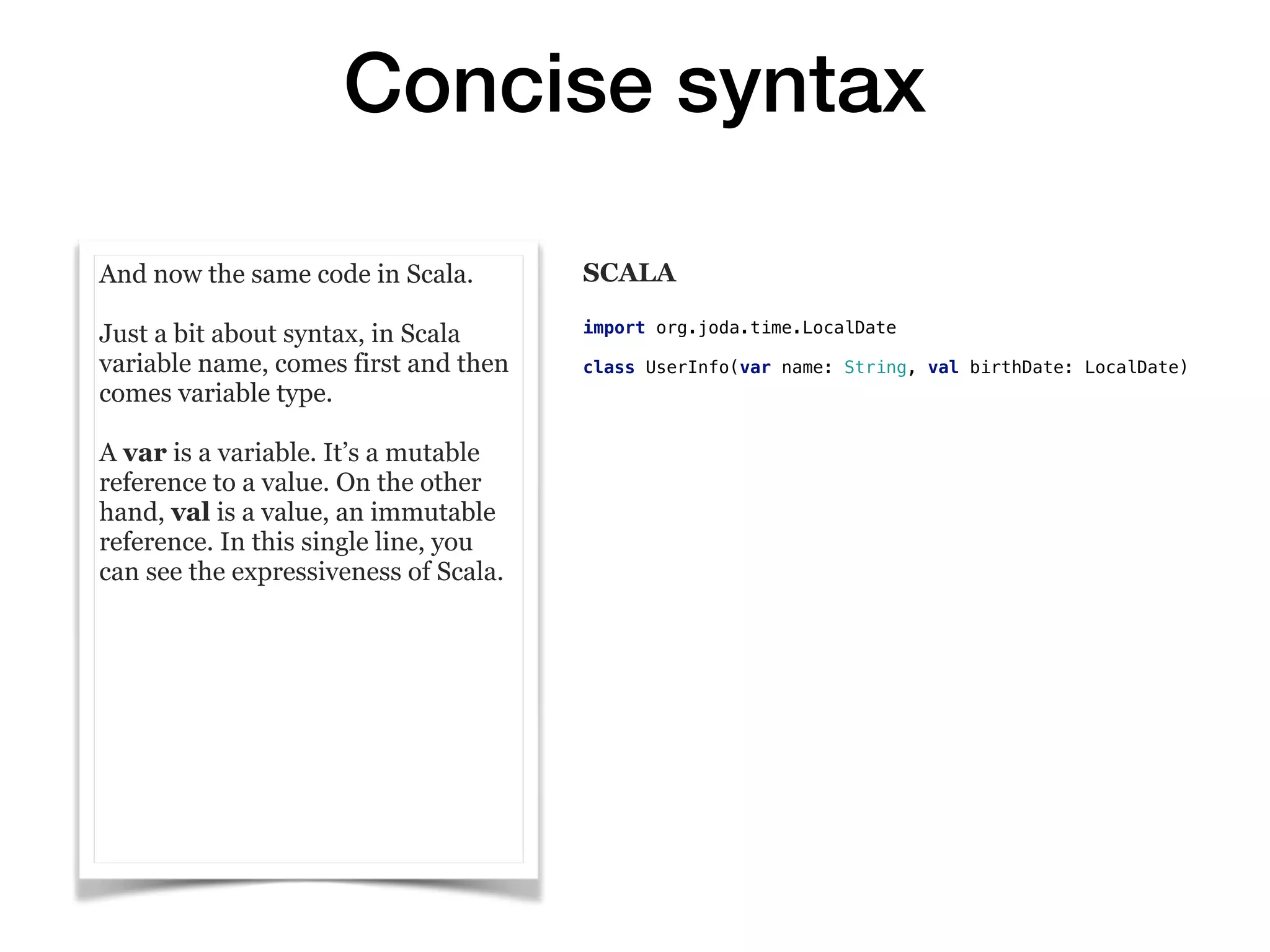
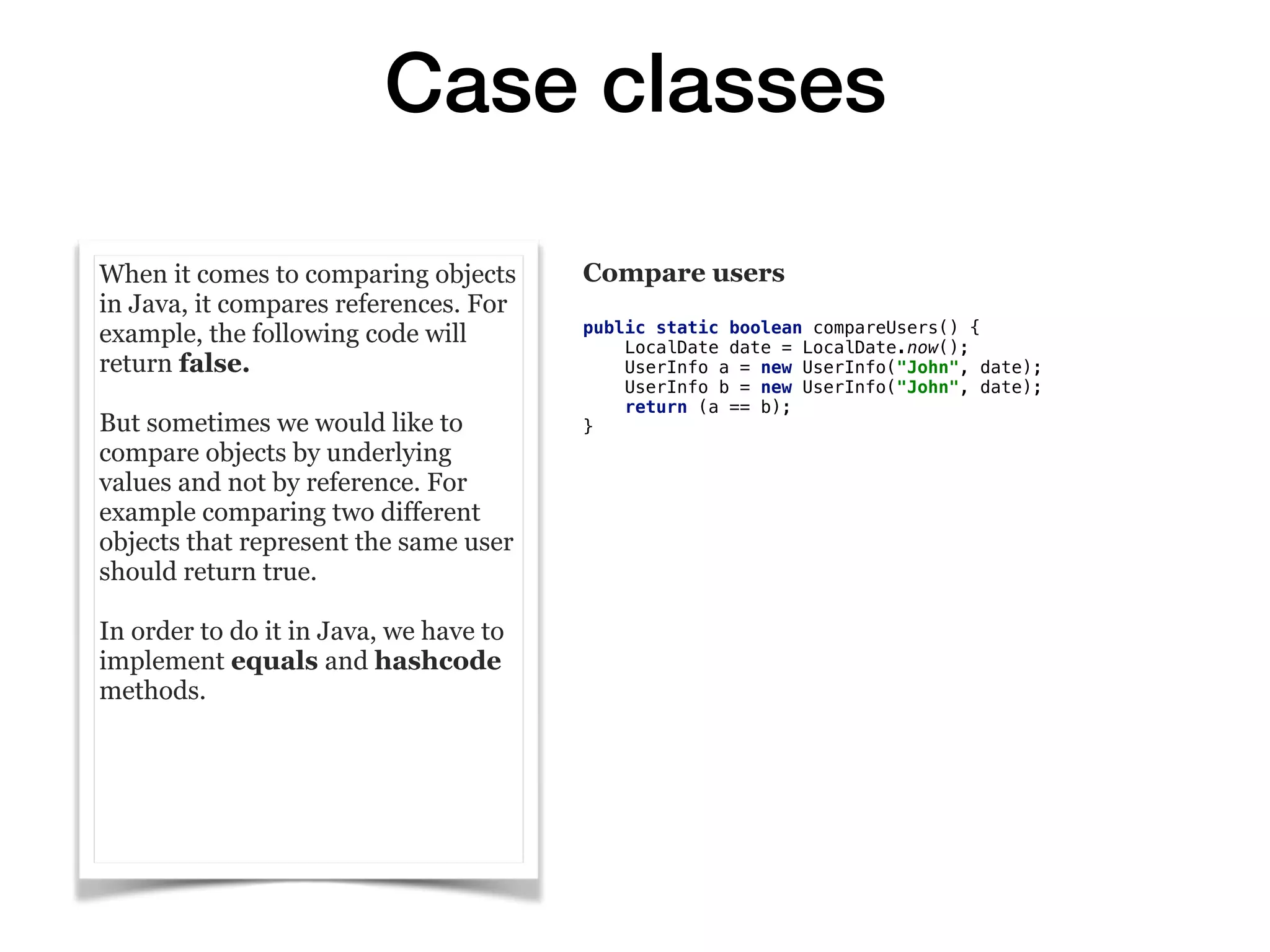
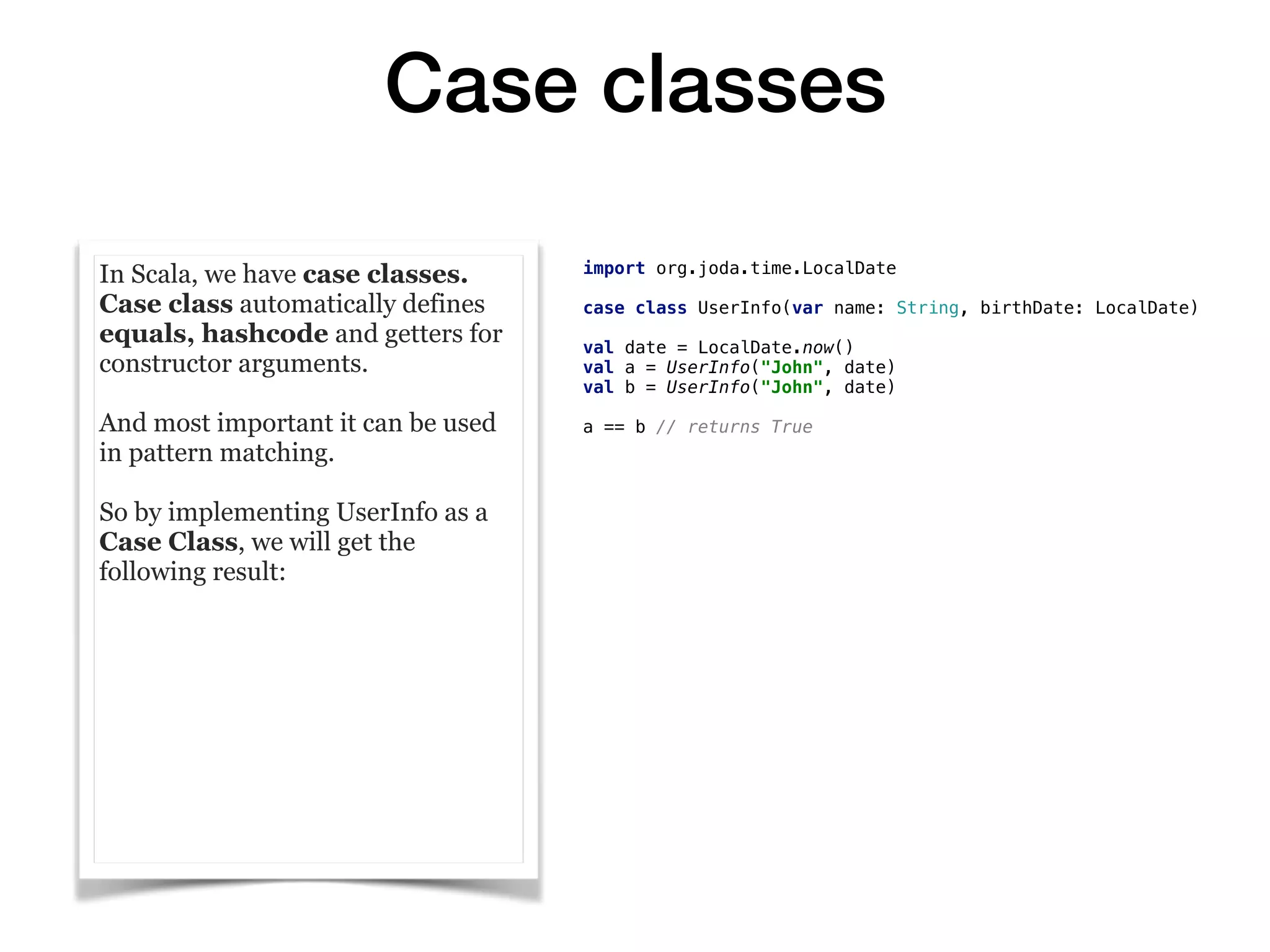
![Pattern matching
Pattern matching is a mechanism
for checking a value against a
pattern.
You can think about Scala’s pattern
matching as a more powerful
version of switch statement in
Java. A match expression has a
value, the match keyword, and at
least one case clause.
In Scala it is possible to perform
pattern matching on types
The more powerful case - matching
integers sequence
// example 1
def matchTest(x: Int): String = x match {
case 1 => "one"
case 2 => "two"
case _ => "many"
}
// example 2
def matchOnType(x: Any): String = x match {
case x: Int => s"$x is integer"
case x: String => s"$x is string"
case _ => "unknown type"
}
matchOnType(1) // returns 1 is integer
matchOnType("1") // returns 1 is string
// example 3
def matchList(x: List[Int]): String = x match {
case List(_) => "a single element list"
case List(_, _) => "a two elements list"
case List(1, _*) => "a list starting with 1"
}
matchList(List(3)) // returns a single elements list
matchList(List(0, 1)) // returns a two elements list
matchList(List(1, 0, 0)) // returns a list starting with 1](https://image.slidesharecdn.com/pr-190423200412/75/A-Scala-tutorial-9-2048.jpg)
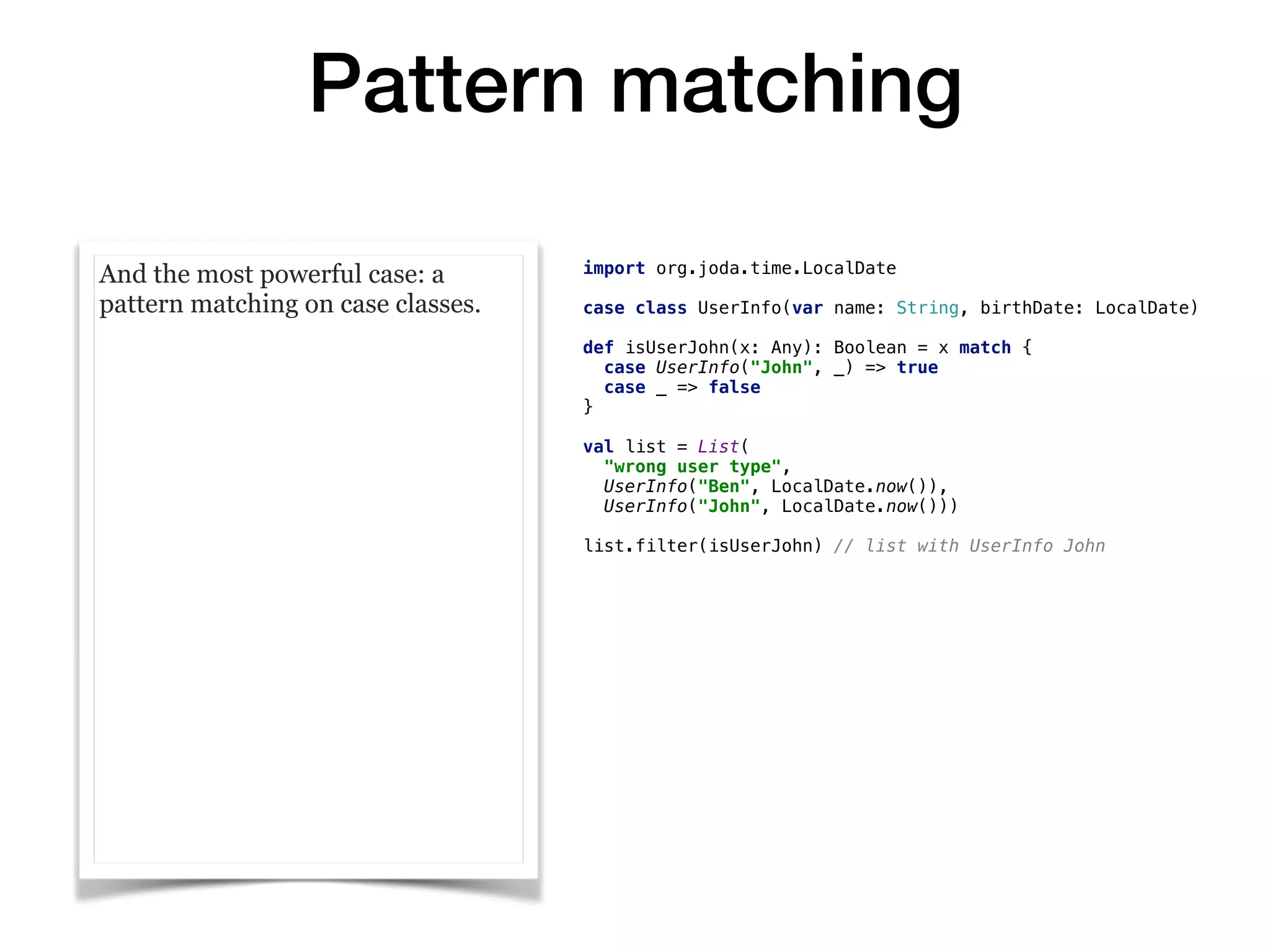
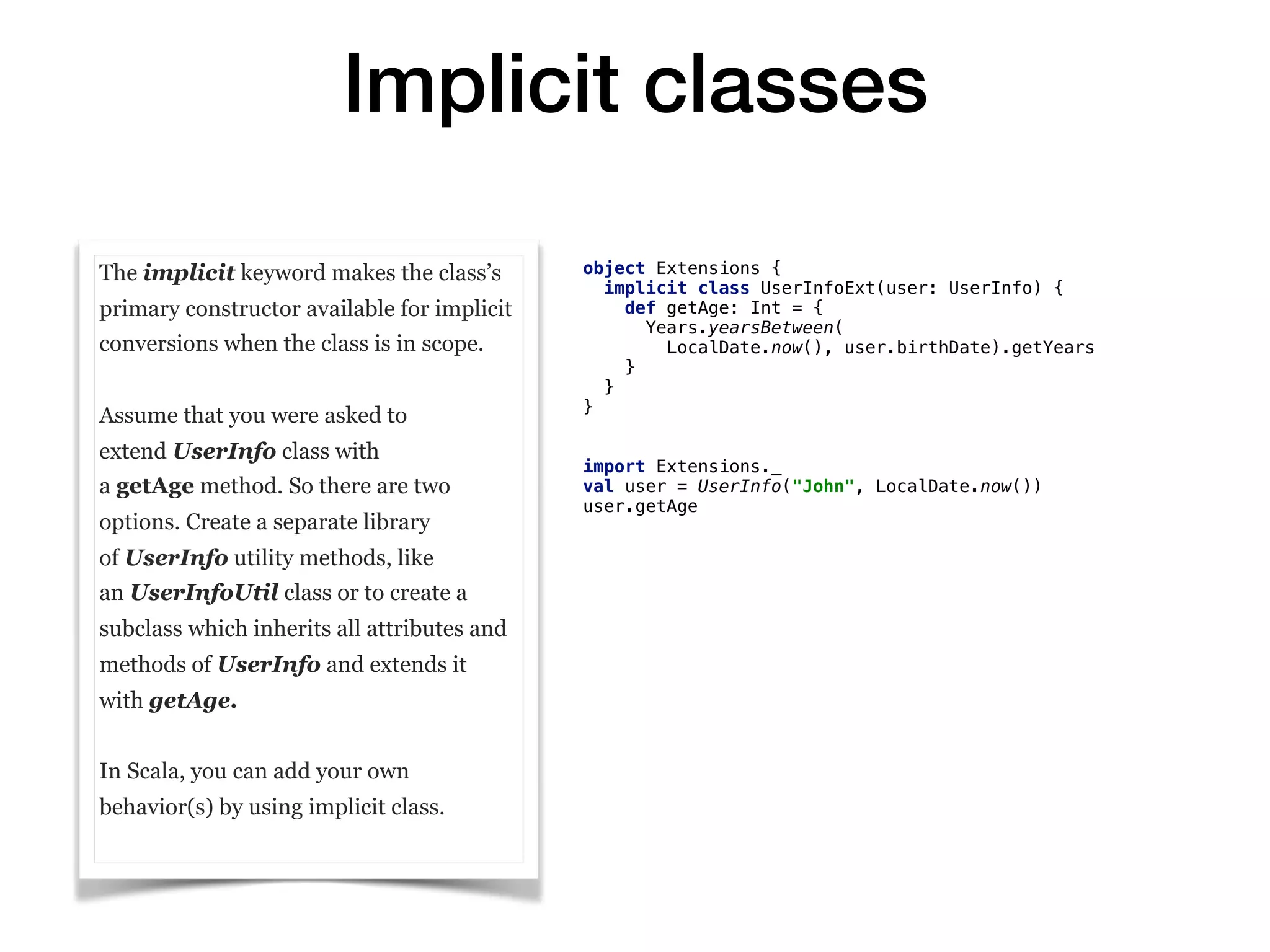
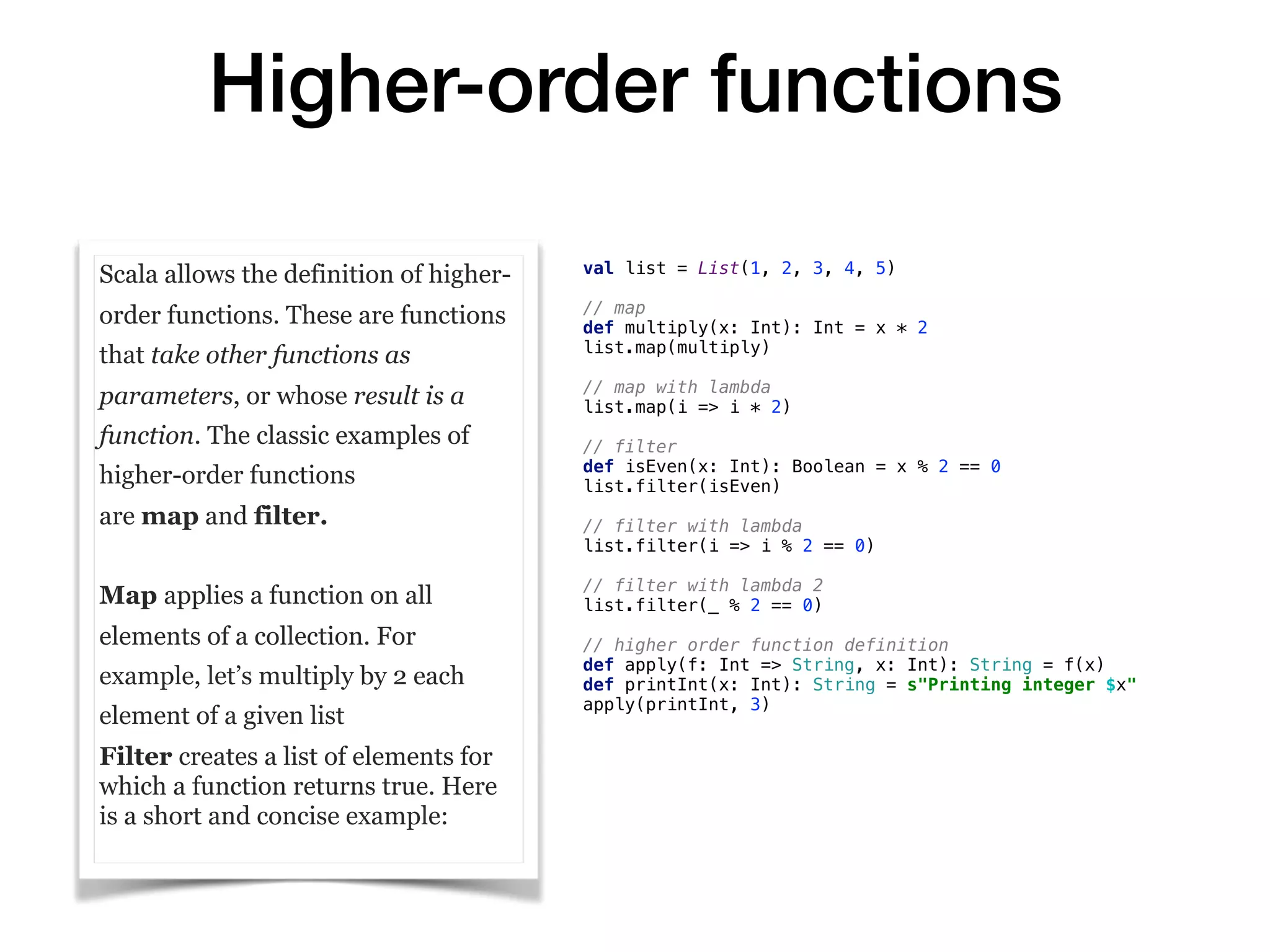
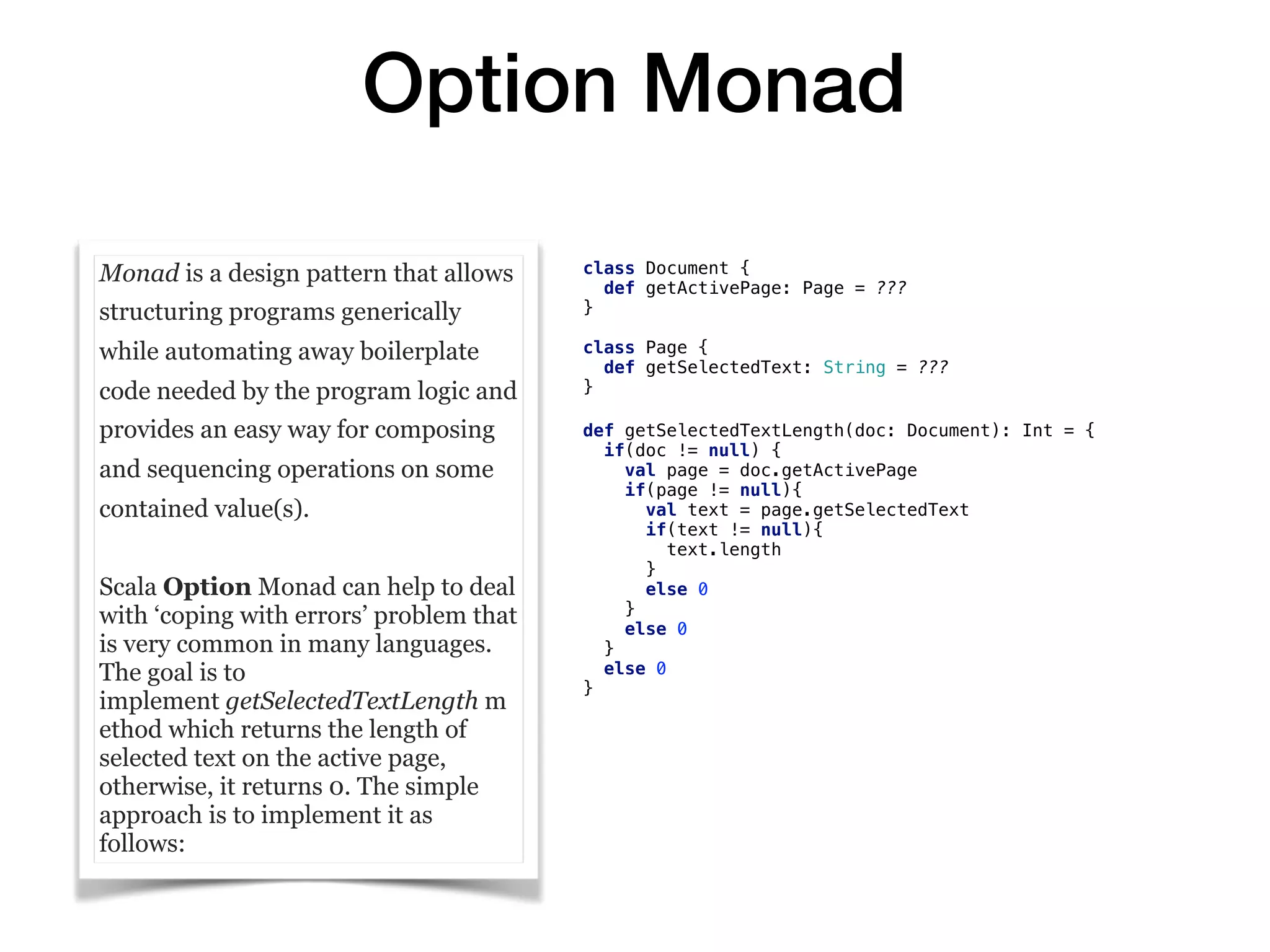
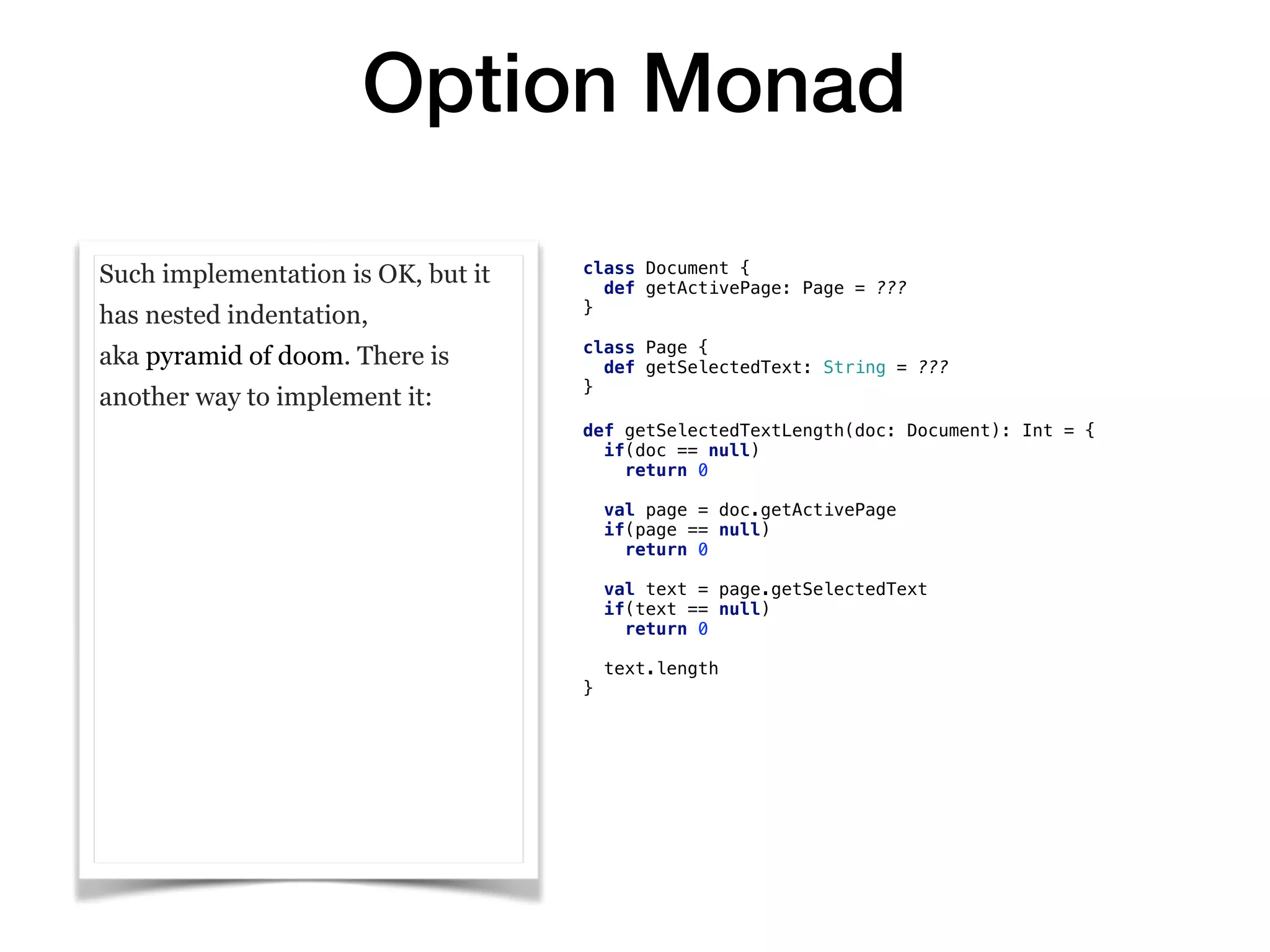
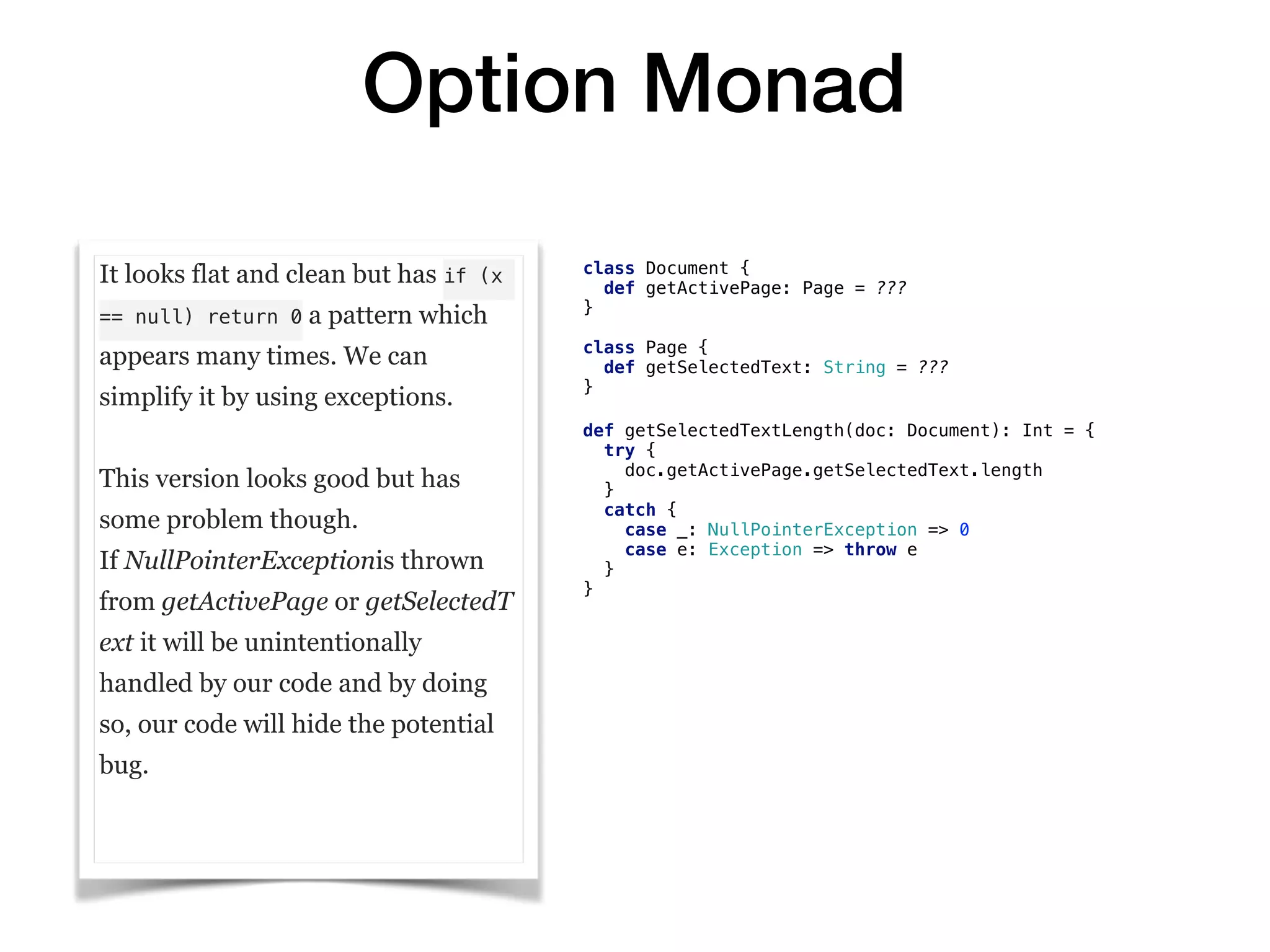
![Option Monad
In Scala it can be solved by
using Option Monad. Option
monad wrappes value of any given
type and have two specific
implementations: None when a
value does not exist (null) or Some
for the existing value, plus it defines
flatMap operation which allows
composing operations sequence
together.
trait Option[A] {
def flatMap[B](f: A => Option[B]): Option[B]
}
case class None[A]() extends Option[A] {
def flatMap[B](f: A => Option[B]): Option[B] = new None
}
case class Some[A](a: A) extends Option[A] {
def flatMap[B](f: A => Option[B]): Option[B] = {
f(a)
}
}](https://image.slidesharecdn.com/pr-190423200412/75/A-Scala-tutorial-16-2048.jpg)
![Option Monad
In Scala it can be solved by
using Option Monad. Option
monad wrappes value of any given
type and have two specific
implementations: None when a
value does not exist (null) or Some
for the existing value, plus it defines
flatMap operation which allows
composing operations sequence
together.
trait Option[A] {
def flatMap[B](f: A => Option[B]): Option[B]
}
case class None[A]() extends Option[A] {
def flatMap[B](f: A => Option[B]): Option[B] = new None
}
case class Some[A](a: A) extends Option[A] {
def flatMap[B](f: A => Option[B]): Option[B] = {
f(a)
}
}](https://image.slidesharecdn.com/pr-190423200412/75/A-Scala-tutorial-17-2048.jpg)
![Option Monad
In Scala it can be solved by
using Option Monad. Option
monad wrappes value of any given
type and have two specific
implementations: None when a
value does not exist (null) or Some
for the existing value, plus it defines
flatMap operation which allows
composing operations sequence
together.
trait Option[A] {
def flatMap[B](f: A => Option[B]): Option[B]
}
case class None[A]() extends Option[A] {
def flatMap[B](f: A => Option[B]): Option[B] = new None
}
case class Some[A](a: A) extends Option[A] {
def flatMap[B](f: A => Option[B]): Option[B] = {
f(a)
}
}](https://image.slidesharecdn.com/pr-190423200412/75/A-Scala-tutorial-18-2048.jpg)
![Option Monad
So by using Option monad, we can
reimplement the code as follows:
class Page {
def getSelectedText: Option[String] = None
}
class Document {
def getActivePage: Option[Page] = None
}
def getSelectedTextLength(doc: Option[Document]): Int = {
doc
.flatMap(_.getActivePage)
.flatMap(_.getSelectedText)
.map(_.length).getOrElse(0)
}
getSelectedTextLength(Some(new Document))](https://image.slidesharecdn.com/pr-190423200412/75/A-Scala-tutorial-19-2048.jpg)
